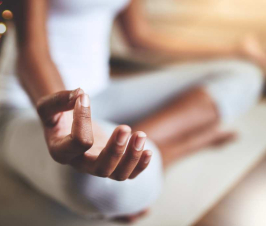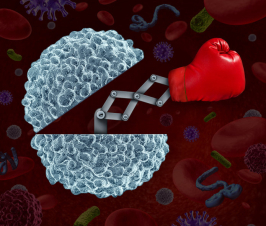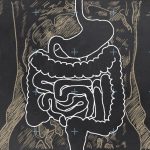Think You Only Have 5 Senses? Think Again. Try 8 or More…
It was before 5:00 am on a hot summer day in Phoenix and I had dropped off my dear friend at the airport. A Tuesday morning in the dead center of summer and the gate resembled more a quiet museum of goodbyes than a busy hub to adventure. This was before the TSA so I was able to go to see him off from the gate. It was a teary farewell for both of us, full of longing. He had wanted me to go with him, and although it was sad to watch him board the plane alone, it felt….. right.
On the way back through the mostly empty gate, I thought over and over again about my decision. I sauntered past the still closed airport shop windows, taking my time. Imagining alternate futures. Considering my decision. He had offered me his world. I didn’t have much. It didn’t make sense in my mind, but my body felt at peace with my choice.
As I meandered I began to feel a prickling feeling in the back of my neck and shoulders. I ignored it and sat down on a bench and silently cried. I felt afraid. For no reason, it seemed. The prickling feeling expanded and a chill covered the entire back of my body. I decided to head back to my car and go home. As I walked, the eerie feeling that someone was watching me persisted. I looked behind my shoulder and saw no one. I felt like running but instead I stopped in front of another closed shop window, pretending to admire the display, and saw a reflection from across the breezeway. I took a few steps and so did the reflection. I walked faster. He walked faster. I made it to the parking garage and something told me to run. I heard footsteps that weren’t mine. I turned around. He was in pursuit. This wasn’t a movie.
He started yelling for me to stop. He was gaining on me. I was able to run faster than I knew I was able to.
In the concrete jungle parking garage everything looked the same. I somehow knew exactly how to find my car! There were all these parked cars and no people around. How was I alone??
I slammed the door shut, barely escaping him, finding safety inside. He began to knock on my car window! My hands struggled to lock the door. I was looking right at him. the The only separation between us was the glass. He made lewd gestures. He spit. My legs were shaking so hard I could barely keep my foot on the clutch.
I made it to the parking attendant and tried to explain what happened. He looked at my like I was crazy. The man had disappeared.
What was that sense that told me someone was watching me? What caused that prickling feeling in my body? How did I know? How was I able to anticipate what was about to happen?
From a very young age, most of us learned that we have 5 senses. It’s basic, right? Sight, hearing, smell, taste, and touch are what many assume make up the bodily senses. The idea of the 5 senses is one that’s been thrown around for centuries, a principle that is credited to Aristotle.
The thing is, we’ve learned a lot since Aristotle wrote De Anima (On the Soul) in 350 BC, where he devoted an entire chapter to those classic senses we’re all familiar with. In reality, neurologists today recognize at least 7 (or even 9) senses. Some say there are at least 21 senses humans possess.
It’s safe to say that you have more senses than you ever expected. We’re highly complex creatures, and those senses you might not yet be familiar with are the body’s own internal sensing system. Where the “original 5 senses” model has to do with things happening outside the body, modern ideas of the senses include that which happens inside the body.
Think of how many times you’ve heard “listen to your body.” What you’re actually listening to is the “other senses” you didn’t even know existed. Your body will tell you exactly what it is you need to do. The key truly is to learn to listen.
A Deeper Look into Our Bodily Senses
There’s really no concrete understanding of exactly how many senses we possess. First of all, it depends on how one defines “sense.” Secondly, the more senses you add to the list, the thinner the boundaries between the senses become. Because of this, experts tend to have varying opinions on exactly how many senses we possess.
Let’s suppose a model of 8 senses, although the possibility of more extends much further.
1. Visual (Sight)
Our visual senses are responsible for our sight. In the brain, the primary visual area is found in the occipital lobe. Acuities are received from the retina through the thalamus and various information is encoded. It’s through the ventral stream in the occipital lobe where various information is converted, including shape, color, motion, and orientation. In order to visually sense where objects are located, information travels from the dorsal stream to parietal lobes.
2. Auditory (Hearing)
Our auditory senses (the primary auditory cortex) responsible for hearing, are primarily found in the superior temporal gyrus in the brain. Detailed sound frequencies can be precisely recorded onto the primary auditory cortex, where specific areas process changes in amplitude or frequency and other areas process sound frequency combinations.
3. Olfactory (Smell)
Our olfactory system is responsible for our sense of smell, with the olfactory bulb found in the most forward part of the bottom of the brain. The olfactory bulb is responsible for sending information from the nose to the brain. It’s known to receive information from other parts of the brain including the amygdala, hippocampus, and neocortex. This sense has four distinct functions that include: augmenting odor detection, discerning between odors, filtering out background odors, and permitting brain areas associated with attention and arousal to adjust the recognition and/or perception of odors.
4. Gustatory (Taste)
The gustatory system is responsible for our sense of taste, and the primary gustatory is between the temporal and frontal lobes of the brain, folded deeply within the insular cortex in the lateral fissure. Aside from telling us what foods we like or don’t like, the gustatory system also helps us to differentiate between sweet and salty or sour and bitter tastes. Most prefer sweet and salty, and while sour can be good sometimes, the ability to sense sour foods through taste evolved to protect us from eating decayed meat, overripe fruit, and other rotten food that contains harmful bacteria.
5. Tactile (Touch)
Our sense of touch comes from the tactile system, where information is sent to the somatosensory cortex via neural pathways to the brain stem, thalamus, and spinal cord. The primary somatosensory cortex is located in the postcentral gyrus (found in the parietal lobe) and is what allows us to experience tactile sensations including touch, pressure, pain, and temperature.
These 5 basic senses are the ones most everyone is familiar with and keep us connected to the external world. What about our internal senses, though? Those we aren’t taught that offer insight to what is happening internally in the body. Here’s where the list of senses starts to deviate from Aristotle’s original idea.
6. Vestibular System
The vestibular system is connected to balance, the primary sensory system that gives us information movement, gravity, and our orientation in space. There are several parts of the brain involved in vestibular processing, including: the cerebellum (movements of the eyes, head, and posture), thalamus (controlling head and body motor responses), cranial nerves III, IV, and VI (allows eyes to stay focused on a moving object), spinal cord (reflex reactions related to balance), and reticular formation (adjusting circulation breathing when the body moves into a new position).
Primarily, the vestibular system signals the neural parts of the brain that keep us upright and control the eye movements. It’s also what’s responsible for that ability most of have to close our eyes and touch the tip of our finger to our nose. It gives us the ability to know where our body is in space.
7. Proprioception (Sense of Muscle and Joint Movement)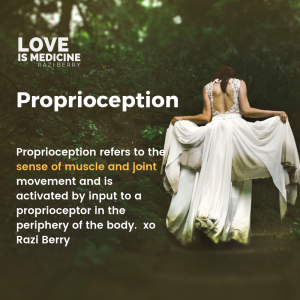 Proprioception refers to the sense of muscle and joint movement and is activated by input to a proprioceptor in the periphery of the body. It merges sensory input from neurons in the inner ear with stretch receptors in the muscles and joints.
Proprioception refers to the sense of muscle and joint movement and is activated by input to a proprioceptor in the periphery of the body. It merges sensory input from neurons in the inner ear with stretch receptors in the muscles and joints.
2 variants of proprioception
There are 2 variants of proprioception: conscious and unconscious. Conscious proprioception leads from the posterior column-medial lemniscus pathway to the cerebrum, where unconscious proprioception leads from the dorsal spinocerebellar tract to the cerebrum.
Proprioception is what allows us to sense the location, position, movement, and orientation of our muscles and joints. It helps us to understand the relative position of various body parts, as well as the effort contained to use these said body parts. Proprioceptive has shown to decline with age, which is connected to increased falls in elderly individuals.
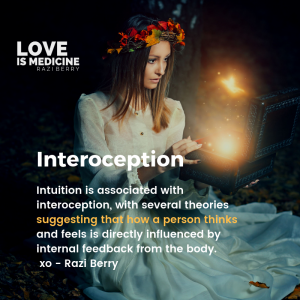 8. Interoception
8. Interoception
Interoception is responsible for sensing what is happening internally in our bodies. Interoception involves the brain process of incorporating signals from the body through neural pathways to specific brain regions (including the brainstem, insula, anterior cingulate cortex, thalamus, and somatosensory) to achieve a distinct depiction of the physiological state of the body. Thirst, hunger, feeling the need to use the bathroom, feeling hot or cold, ovulation, and feeling pain are all associated with interoception.
Interoceptive signals stem from several physiological systems in the body. Cardiovascular interoception is the most commonly studied and is generally measured by directing attention towards the sensation of the heartbeat while performing various tasks. Other systems involved in interoception include the respiratory, gastrointestinal, genitourinary, nociceptive, thermoregulatory, endocrine, and immune.
Intuition is associated with interoception, with several theories suggesting that how a person thinks and feels is directly influenced by internal feedback from the body. Perceiving subtle bodily changes (interoception) has shown to strengthen the relationship between cognitive affective processing and bodily reactions.
But Wait, There’s More…
9. Magnetoception
Magnetoreception is a sense that allows for the detection of a magnetic field in order to perceive location, direction, or altitude. It is used by several animals to navigate their way over long distances by syncing up with the earth’s electromagnetic field. While it’s always been assumed that humans don’t have an electromagnetic field, some scientists believe that humans indeed possess an electromagnetic sense.
While the mechanism for magnetoreception for animals isn’t known, it’s suggested that this sense is possible through the radical pair mechanism and was hypothesized to pertain to magnetoreception in 1978. Some 20 years later, cryptochrome (a flavoprotein found in the eyes of certain animal species) was suggested to be the molecule associated with sensitive magnetic radical pairs.
In a study published in Nature Communications, it was discovered that when cryptochrome was taken from the human retina and placed into fruit flies it was able to detect the earth’s magnetic field. Could this protein serve as a magneto sensor in humans? Some experts believe that cryptochrome in the human retina could be important for fulfilling the human ability to sense magnetic fields.
The surface has barely been scratched when it comes to understanding magnetoreception in humans. It is, after all, considered one of the most difficult senses to study. According to one of the researchers who discovered cryptochrome was a magnetic molecule, “Basic things that you do in other senses don’t make sense when it comes to magnetoreception. Almost every other sense is linked to an opening in bone structure-eyes, ears, and so on. The magnetic sense could sit anywhere in the body because the magnetic field penetrates the body.”
10. Chemosensing
 Chemosensing is the ability to sense an analyte (a substance or chemical that is of interest in an analytical procedure) to generate a signal or change that is detectable. Chemosensing occurs through chemosensors, which are specialized sensory receptor cells. There are 2 distinct classes of chemosensors: distance and direct.
Chemosensing is the ability to sense an analyte (a substance or chemical that is of interest in an analytical procedure) to generate a signal or change that is detectable. Chemosensing occurs through chemosensors, which are specialized sensory receptor cells. There are 2 distinct classes of chemosensors: distance and direct.
Distance chemosensors are olfactory receptor neurons located in the olfactory system, which detects odors and pheromones in the nasal cavity. Direct chemosensors are taste receptors located in the gustatory system, whose primary use in chemoreception is for the detection of taste.
Recent research suggests that different cells in the gut contain a subtle chemosensing system that communicates sensory information to other systems involved in the regulation of gastrointestinal motility (the ability of organisms and fluid to move or get around), immune response, and appetite due to the role of the gut to continuously monitor and distinguish between nutrients that need to be integrated and harmful substances that need to be expelled. It’s supposed that disturbances in the communication of this sensory information could influence the development or continuation of disease.
Chemosensing in the gut is an emerging research field that contends that taste perception could play a primary role in the regulation of gut function. Specialized diets or agonists that affect chemosensing system could be deemed new therapeutic targets to adjust adequate physiological processes in the gut for improved health and disease prevention.
Making Sense of Your Body’s Senses
There are some that contend we may even have as many as 20 senses, yet many still remain a mystery. And it’s here where the distinction becomes less clear. Understanding more about our senses can make it easier to understand why listening to what your body has to say is vitally important for increased overall wellness of both body and mind.
Want to learn more about how our physiology affects our mental and physical health and how better understanding the way the body and mind work together can lead to a healthier and happier life? Please join my Facebook page, Love is Medicine, where we dig deep into how our relationships with ourselves and others affect our physiological, biological, and psychological health and well-being.
 Razi Berry is the founder and publisher of the journal Naturopathic Doctor News & Review, which has been in print since 2005, and the premier consumer-faced website of naturopathic medicine, NaturalPath. She is the host of The Natural Cancer Prevention Summit and The Heart Revolution-Heal, Empower and Follow Your Heart, and the popular 10 week Sugar Free Summer program. From a near death experience as a young girl that healed her failing heart, to later overcoming infertility and Chronic Fatigue Syndrome and Fibromyalgia through naturopathic medicine, Razi has lived the mind/body healing paradigm. Her projects uniquely capture the tradition and philosophy of naturopathy: The healing power of nature, the vital life force in every living thing and the undeniable role that science and mind/body medicine have in creating health and overcoming dis-ease. Follow Razi on Facebook at Razi Berry , join her Love is Medicine group to explore the convergence of love and health, and find more Love is Medicine podcast episodes here.
Razi Berry is the founder and publisher of the journal Naturopathic Doctor News & Review, which has been in print since 2005, and the premier consumer-faced website of naturopathic medicine, NaturalPath. She is the host of The Natural Cancer Prevention Summit and The Heart Revolution-Heal, Empower and Follow Your Heart, and the popular 10 week Sugar Free Summer program. From a near death experience as a young girl that healed her failing heart, to later overcoming infertility and Chronic Fatigue Syndrome and Fibromyalgia through naturopathic medicine, Razi has lived the mind/body healing paradigm. Her projects uniquely capture the tradition and philosophy of naturopathy: The healing power of nature, the vital life force in every living thing and the undeniable role that science and mind/body medicine have in creating health and overcoming dis-ease. Follow Razi on Facebook at Razi Berry , join her Love is Medicine group to explore the convergence of love and health, and find more Love is Medicine podcast episodes here.


